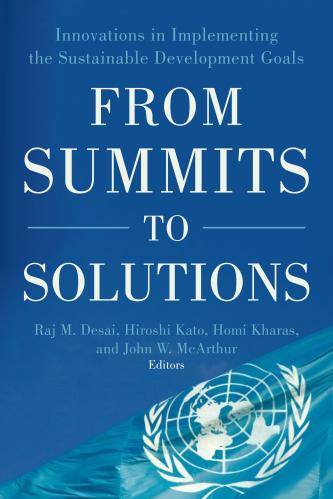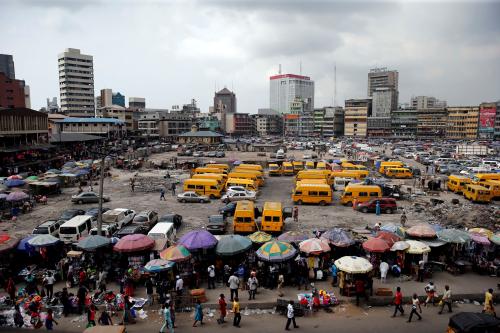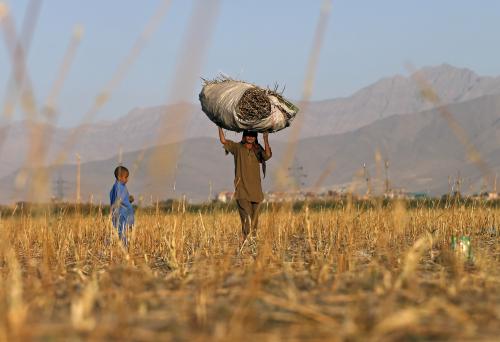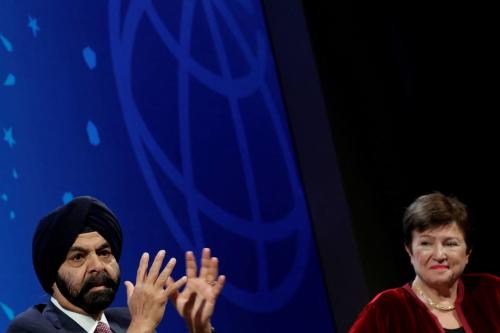Arguably the most radical aspect of Agenda 2030 and the Sustainable Development Goals (SDGs)—and what most distinguishes today’s development doctrine from that of earlier generations—is the concept of universalism. This universalism shows up on two levels. First, the SDGs explicitly apply to high-income countries, rather than just low- and middle-income countries. That is, “development” is not just something that happens “over there,” a means by which poor countries can someday hope to look more like rich countries, but rather a communal, collective, and enduring process, with shared obligations and responsibilities across societies.
Second, is the mantra of “leave no one behind.” This reflects the fact that, though in aggregate the world witnessed rapid development gains over the last three decades, many individuals, communities, and countries made little progress. Leaving no one behind means prioritizing global development efforts on the poorest countries, tackling inequality within countries, and fighting for the inclusion of marginalized people everywhere.
While the development community has embraced the principle of leaving no one behind, what should it entail in practice? And what specific policies and actions should development agencies adopt to realize it?
These questions are taken up in the Development Cooperation Report 2018, “Joining Forces to Leave No One Behind,” released earlier this week by the Organisation for Economic Co-operation and Development (OECD).
We contributed a chapter to this report that assesses development assistance to countries that are severely off-track to meet SDG 1, ending extreme poverty. Building on earlier analysis, we identify 31 countries that, based on current trajectories, are likely to have poverty headcount ratios of at least 20 percent in 2030. Notably, we find that today official development assistance (ODA) to these countries is limited: while these 31 countries account for nearly two-thirds of the global population living in extreme poverty, they receive less than one-quarter of total country programmable aid provided by OECD countries—and this figure has been falling in recent years. Moreover, the effectiveness of this aid is further undercut by high volatility, making it difficult to plan and implement long-term strategies. Ultimately, we conclude that to-date donors’ actions on prioritizing support to the furthest behind countries has not lived up their rhetoric: while many donors talk about reorienting their strategies to focus support on countries that need the most assistance, few have actually followed through.
Other chapters in the report assess a series of pressing development priorities, including income inequality, fragility, governance, climate change, women and girls, youth, and disability, in addition to case studies of what’s worked in developing countries and analyses of trends in donor assistance. Overall, while there is, of course, important variation by country and issue area, many authors reach similar conclusions to our own: despite donor rhetoric, reforms to their actual policies, programming, and activities fall short to what will be needed to achieve Agenda 2030.
To help close this gap, in an overview chapter, the report’s lead authors call for new narratives among development practitioners on the importance of leaving no one behind, a systematic approach to mainstreaming the concept of leave no one behind across the portfolio of development cooperation activities, and more and smarter official development assistance. For each of these priorities, the report provides a specific list of actionable recommendations to advance the reality of leaving no one behind.
With the report published, the onus now shifts to donor agencies and their political leaders to take up and implement these ideas. An introductory chapter notes that the report “responds to demand from members of the OECD Development Assistance Committee for greater clarity” on how to translate the principle of leaving no one behind into practice. Was this demand real, or merely cheap talk from officials who are well-steeped in the rhetoric of sustainable development but unable or unwilling to tackle the thorny political and bureaucratic reforms necessary to realize this ambition? It is time to find out.








Commentary
Leave no one behind: From development slogan to policy practice
December 14, 2018